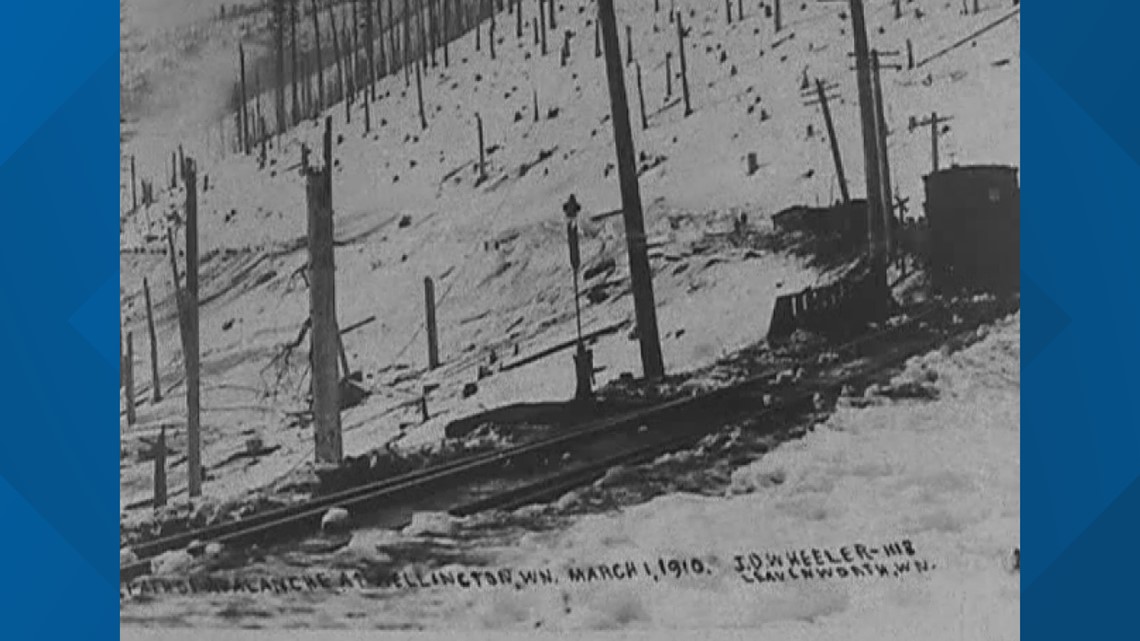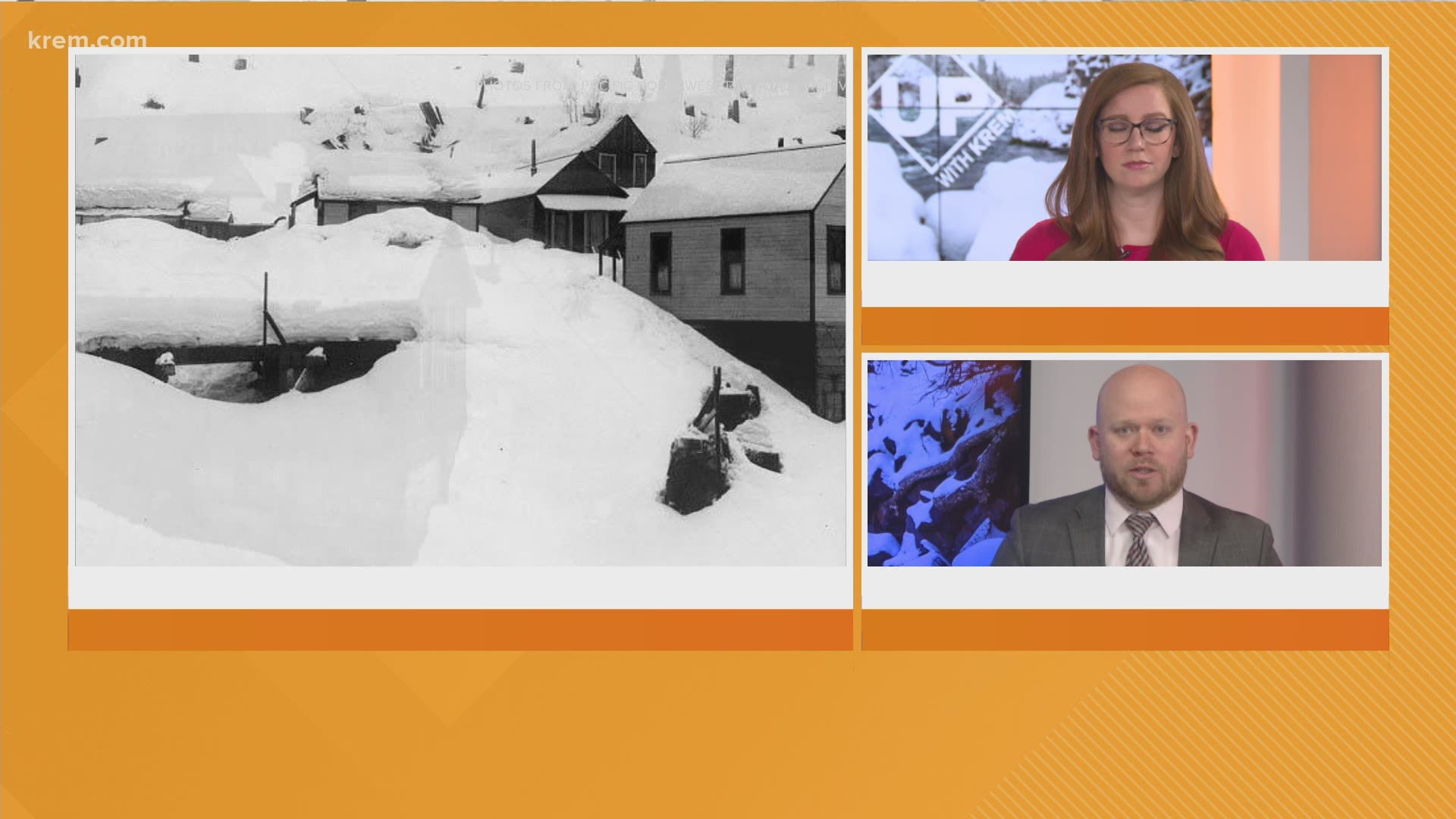WELLINGTON, Wash. — The deadliest avalanche in U.S. history happened 111 years ago in the Cascades, killing 96 people.
At the end of February 1910, a blizzard hit for nine straight days. At times, up to a foot of snow fell every hour. One day, there was 132 inches of snow, which is 11 feet.
Snow trapped two trains on a railway line just west of Stevens Pass in the town of Wellington.
On February 28, 1910, temperatures warmed, and the snow turned to rain, increasing avalanche danger. On March 1 at 1:42 a.m., a slab of snow broke loose from the side of the mountain. The snow raced down the slope at 70 to 100 miles per hour and took two trains off the track, tearing them apart, according to Meteorologist Rich Marriott.
“To see the destruction to the metal that was done from this is just – it's remarkable,” Marriott said.
The slide scattered bodies and buried some 40 feet underneath the crushing snow. Ninety-six people died, and 23 people survived the Wellington avalanche.


The weather that season stalled recovery efforts for months, and the last body wasn't pulled until July, which was 21 weeks later.
What followed has helped avoid similar disasters. In October 1910, the railway began construction on massive concrete snowsheds over the tracks. It eventually dismantled the rail line away from the avalanche-prone mountain and onto a lower elevation that's still in use today.
Back then, the railway wouldn't let anything stop or delay its trains. Today, railroad and Washington State Department of Transportation (WSDOT) crews pay careful attention to the weather and don’t hesitate in shutting down mountain passes.
“We look at, you know, balancing that commitment to keeping the highway open, but also not falling into the trap of over-committing when we can't manage the risk,” said WSDOT Avalanche Forecaster Harlan Sheppard.
WSDOT crews also work to mitigate avalanche dangers on the passes, including using explosives to pre-emptively trigger slides.
This season there have been 33 avalanche fatalities in the U.S., making it the deadliest avalanche season since 2013, according to the Colorado Avalanche Information Center. Twenty-six of those deaths were in the last four weeks, including one in Kittitas County.

